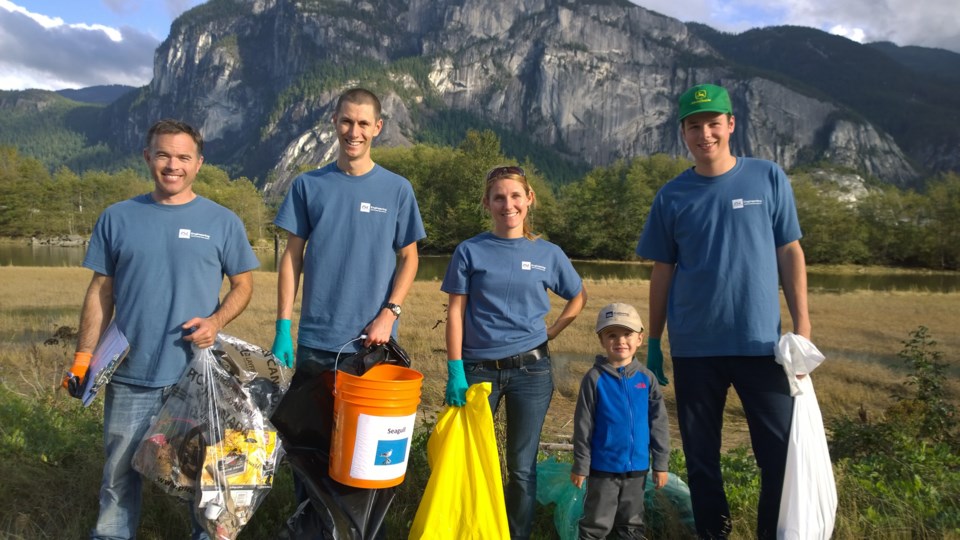Erin Yeo notices the plastic bottles and bags scattered about beaches and creek banks.
For the past four years, the Squamish Terminals event coordinator has been at the helm of the community’s Great Canadian Shoreline Cleanup. Gathering enough trash to fill approximately 100 garbage bags is always an eye opener, but what’s more shocking is the amount that is plastics. “In 2014 we collected 69 per cent more plastics compared to 2013,” she said, noting the majority of it washes out into Howe Sound.
The material’s harm to the environment is proving to be more than just an eyesore. A new study by the head of the Ocean Pollution Research Program at Vancouver Aquarium Marine Science Centre confirms it’s entering the food chain.
Dr. Peter Ross’s research, which focused on four major areas in coastal B.C., revealed tiny microscopic animals called zooplankton are ingesting plastic particles at an alarming rate. The scientific paper, which was published on June 12, marks the first indisputable evidence that species at the bottom of the food chain are mistaking plastic for food, the aquarium stated in a news release.
“The potential transfer of microplastics in the food web, from zooplankton to Pacific salmon that ingest them, would be a great concern given the importance of salmon in our regional ecosystems,” Ross stated.
Microplastics refer to barely visible litter in the form of small fragments, fibres and granules. The particles could pose a serious risk of physical harm to marine animals that consume them, potentially blocking their gut or leaching chemicals into their bodies, Ross stated.
Using the findings in zooplankton, Ross estimates juvenile salmon in the Strait of Georgia may be ingesting two to seven microplastic particles per day. With the same measurements, he predicts returning adult salmon are eating up to 91 particles per day.
The study highlights the importance of raising community awareness around the use of plastics, Squamish River Watershed Society executive director Edith Tobe said. One example of how people can do their part is by not dumping doggy poo bags near creeks and beaches, she said.
On a higher level, municipalities can call for the ban of plastic bags within their jurisdiction, Tobe noted. “Everything, especially in a town like ours, everything washes into the ocean.”
The 5th annual Shoreline Cleanup takes place on Sept 9 starting at 4 p.m. when everyone interested in helping is invited to meet at the O’Siyam Pavilion in downtown Squamish. The cleanup covers the Squamish Spit, estuary and oceanfront lands, including Cattermole Slough, Nexen beach and the Mamquam Blind Channel. To register, visit shorelinecleanup.ca or email [email protected].



